The Electric Locomotive Roster: DC & AC/DC Electrics

People in India think of electric trains as a new, modern invention. However, that is not so. Trains on electric traction have been running in India from as early as 1925, long before there was even one diesel locomotive in India, when railway lines of the Mumbai region and its surroundings within the boundaries of Virar, Igatpuri and Pune (~380 km) were “electrified” with 1500V Direct Current (DC) carrying Overhead Equipment (OHE) by the then British railway companies of Bombay, Baroda & Central India (BB&CI) (Western line) and the Great Indian Peninsular Railway (GIPR) (Central lines). And these would end up the only lines powered by DC traction (except for some areas in Kolkata and Chennai for a short while) while the rest of India would adopt 25kV AC traction. Surrounded by a sea of AC traction, Mumbai remained an island of DC with its own technologies and rolling stock, its 1500V DC locomotives doomed to be bound to this island for all the rest of time. This chapter is about the electric locomotive classes on Indian Railways that (could) run on Direct Current (DC) traction and on both AC and DC traction (Bi-Current AC/DC), the Bombay boys!
GIPR (todays’s Central Railway) pioneered electric traction in India. The first electric train to run in India was a GIPR DC EMU between Bombay VT and Kurla (on today’s Harbor line) on February 3 1925, signalling the birth of the Mumbai local trains. The first mainline electric locomotive in India was a WCP1 (then EE/1) also acquired by GIPR in 1928-29 to run their trains between Mumbai and Pune/Igatpuri. The GIPR and later Central Railway would remain the mainstay of DC traction in Mumbai and India with their WCP1, WCP2, WCG1, WCG2, WCM1/2/3/4/5, WCAM3, WCM6 and WCAG1 loco classes. Interestingly, Western Railway (BB&CI) never owned or had any mainline electric locomotives running on its lines in Mumbai until 1975, 40 years after its route was electrified! Until then WR trains coming into Mumbai mostly ran on steam or some prestigious ones on diesel and the electric traction was used only to run EMUs. Even after 1975, WR never procured any purely-DC locomotives but only AC/DC dual-current electric locomotives for Mumbai (only two classes: WCAM1 and WCAM2), possibly because before WR’s Virar-Ahmedabad section was electrified using 25kV AC traction in 1974, the DC-powered WR trackage in Mumbai was not extensive enough to warrant separate purely DC electric locomotives, though they did borrow the occasional WCM from CR. DC locos were doomed altogether when in the early 1990s it was decided that Mumbai should also be completely converted to 25 kV AC.
Electric locomotives do not have “engines” in the traditional sense. They just do a lot of conversions to the current they get from overhead lines and use that to power traction motors to turn the wheels (Read more). This is the story of the Bombay Boys: Indian Railways’ purely DC traction locomotives. the “WC” classes are also the only ones that contain locomotives from pre-independence times.
WCP 1
- Pre-Independence Locomotives run by GIPR.
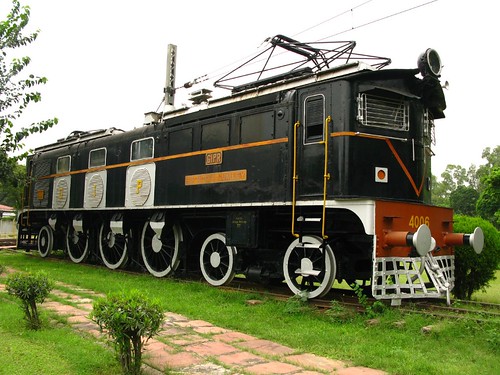
- Very first Electric Locos in India
- Built and imported from Europe
- Production Period: 1928 – 1930
- Units Produced: 22
- Wheel Arrangement: 2-Co-1
- Rated Power Outpur: 2160 hp
- Top (Rated) Speed: 120 kph
It all started with the WCP1. In 1928, the EA/1 #4000 (later renumbered #4003 and then WCP1 #20002 after independence) built by the Swiss Locomotive and Machine Works (SLM) and Metropolitan Vickers of UK for the then Great India Peninsular Railway (GIPR) became the very first electric locomotive to run on Indian soil along with the EB/1 and EC/1, all prototypes procured in response to GIPR’s tenders for high-speed Broad Gauge 1500 V DC locomotives for service on the Mumbai-Pune and Igatpuri routes. (GIPR wanted speeds of 85 mph (137 kph) but that turned out to be impossible). The EA/1 was selected for mass production and WCP1s hence turned out to be the great-great-granddaddys of all electric locomotives in India, older than Indian Railways or even the Republic of India itself! Their 2-Co-1 (1-Co-2) wheel arrangement with exposed spoked wheels that looks strange for an electric locomotive was influenced by the hugely popular 4-6-2 wheel arrangement of the then Pacific steam locomotives, where each of the three big wheels were powered by two traction motors generating 350 hp each connected to the axle through a Universal Drive. Their (then) mind-blowing 120 kph top speed enabling them to cover the Mumbai – Pune distance in 2 hrs 45 min ushered in a revolution in Indian rail travel, making them the equivalents of the bullet trains of the 1930s. (The fastest train between Mumbai and Pune today, the SC Duronto takes 3 hours). They remained in service until the 1980s and are sadly all but forgotten today. The most famous WCP 1, #4006 “Sir Roger Lumley”, said to have hauled the Deccan Queen on its inaugural run in 1930 is preserved at the National Rail Museum, New Delhi. And here below is the forebear of all Indian electric locomotives, the Swiss gentleman GIRP EA/1 #4000.
WCP 2
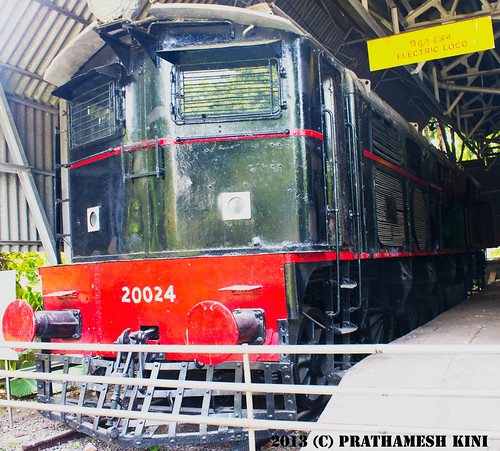 The very same WCP1 made
The very same WCP1 made- Production Period: 1938
- Units Produced: 1
- Wheel Arrangement: 2-Co-1
- Rated Power Output: 2160 hp
- Top (Rated) Speed: 120 kph
- Traction Motors: 6
The lone WCP2 was produced in 1938, eight years after production of the WCP1 had ceased. It was then classified EA/2 by GIPR and hence WCP2 by IR. It is not clear why it was given a distinct classification as it is in essence the very same EA/1 (WCP1) and shared all its specifications. It was numbered #4025 by the GIPR and later #20024 by IR. There is a belief that it was this #20024 that hauled the Deccan Queen on its first run in 1930, which is wrong. It was the then EA/1 #4006 (Sir Roger Lumley, above), later renumbered #20004 by IR that did those honors. #20024 (#4025) was not even produced when the Deccan Queen started running. It is now on display (only the shell) at the Nehru Center of Science in New Delhi.
WCP 3 and WCP 4
- More Test Prototypes (EB/1 & EC/1)
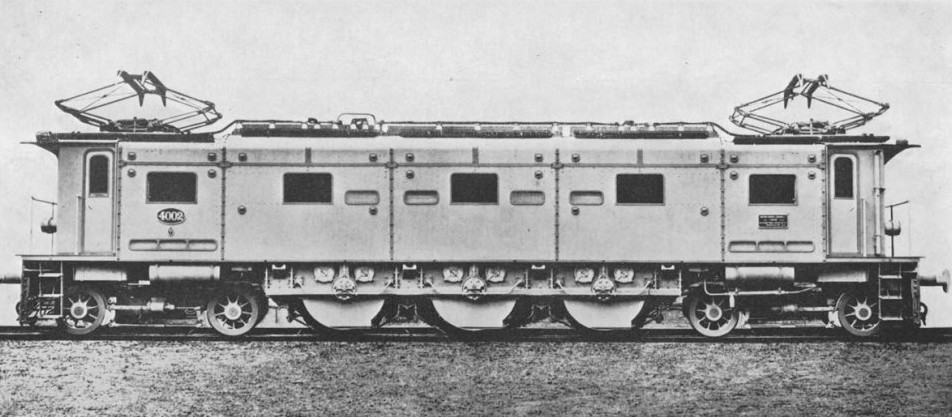
- Production Period: 1928
- Units Produced: 1 each
- Wheel Arrangement: 2-Co-2
- Rated Power Output: 2250 hp (WCP 3) 2390 hp (WCP 4)
- Top (Rated) Speed: 120 kph
- Traction Motors: 6 each
EB/1 and EC/1 were two more prototype locomotives GIPR had procured along with the EA/1 as a competing bid to the tender put out by GIPR but lost out to SML & Metro Vickers. Both were manufactured by Leslie Hawthrone and Co. in UK, but with two different types of drives coming from General Electric and Brown Boveri respectively, attempts at hitting the 137 kph speeds GIPR requested. They were more powerful and had a symmetrical wheel arrangement of 2-Co-2 which again, looks like was inspired by steam locomotives. EB/1 was #4001 and EC/1 was #4002 but these were not selected for further mass production. They remained in service with the Indian Railways until the 1960 when they were assumed scrapped. Though largely forgotten, the WCP3 and WCP4 were still only the second and third electric locos in India, and largely share the WCP1’s legacy.
Thank you Mr. Peter Christener for your amazing inputs that have a great help!
WCG 1
- Completely Built and Imported from Switzerland.

- First electric locos in India along with EA/1
- Production Period: 1928 – 1929
- Units Produced: 41
- Wheel Arrangement: C’C’ (0-6-6-0)
- Rated Power Output: 2600 hp
- Top (Rated) Speed: 72 kph
- Driving: 4 traction motors, driving 2 axles
The WCG1s were were brothers of the WCP1, brought to India along with the EA/1 from the same manufacturers in 1928, making them the earliest electric locos in the country along with the WCP1. They were to be dedicated freight locos and were classified EF/1 by GIPR. Their two extended “bonnets” on both ends and general low-slung stance together with the cowcatcher made the EF/1 look like a Crocodile, which prompted the Swiss to nickname them so. Around the Mumbai area they were known as “Khekda” (crab). They were legendary for pulling long, heavy freights up and down the Ghats without breaking a sweat, thanks to their high starting tractive force of 30.4 tonnes, double that of the EA/1 and just 3 tonnes less than the WAM4! They also had features like articulated bodies (which could bend!) and regenerative breaking making tight ghat curves a breeze. The most curious were the driving rods for the wheels, an absolute rarity for non-steam locomotives. The WCG1 had two bogies each with three (unpowered) axles on the ground and one axle and wheels above plane, to which two traction motors were coupled together, which would drive the wheels on the ground through the set of connecting rods. These legends worked for 72 long years, when the last ones were retired in sometime in 1994. The third Krokodil EF/1 #4502 or WCG1 #20027 “Sir Leslie Wilson” is preserved at NRM, New Delhi.
WCG 2
- Developed & built completely in India.
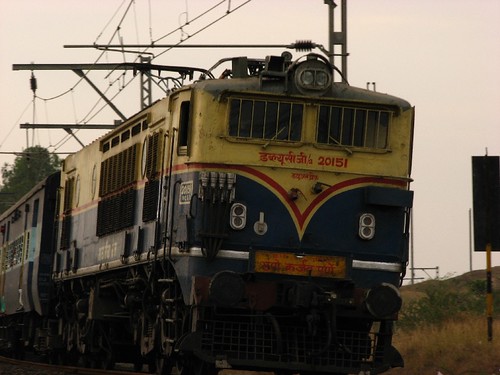
- Exclusively operated by CSTM div of CR.
- Most Powerful loco in India at time of launch
- Production Period: 1970
- Units Produced: 57
- Wheel Arrangement: C0-C0
- Max Rated Power: 4200 hp
- Top (Rated) Speed: 80 kph
- One of the heaviest locos at 132 t
By the late 1960s with the WCG1s were getting a bit long in the tooth and the newly introduced WCMs performing poorly on freight duties in the ghats prompted CR to look for a dedicated-freight successor to the Crocodiles. A decade of R&D and testing resulted in the mighty WCG2, when rolled out (1970) was the heaviest (132t), most powerful and the locomotive with the highest tractive effort (35.6 tonnes) in India. The WCG2 was designed and developed completely in India by RDSO and built at CLW. However, they were not really completely indigenous but were a mix of features taken from many successful locomotive designs, featuring technological cues borrowed from some Japanese locomotives of the time (probably the EF Class), ALCO trimount bogies of the WDM2 and the 1960s “French” looks of the WAM class design by the 50 Cycles European consortium. All 57 produced were assigned to Kalyan shed of Mumbai division of Central Railway to haul freights, do banking duties on the Bhor and Tull ghats and haul the occasional express. It was the WCG2 that rescued Mumbai when CR experienced a terrible loco shortage crisis during the 1990s when WCMs failed repeatedly. Nicknamed “Howlers” because of the loud noise generated by the blowers of their DBRs, they sported distinct cream-blue with a red stripe in the middle liveries and “double-pan” pantographs. After unrelenting service of 40 years, they were all taken out of duty on May 02 2010 when the Central Railway line on the Bhor Ghats were converted from DC to AC. Today all are scrapped except one (#20158) which is earmarked for preservation at the NRM. It is a shame that these beasts could never leave the Mumbai area.
The WCM Series (BG 1500V DC Electric Mixed Traffic) Locos
The WCMs pioneered the concept of the use of “mixed” locomotives that had specifications which could enable them to handle both freight, passenger (and banking or shunting) services all at the same time. Though this would prove extremely successful for diesels a decade later, that did not work out with the WCMs. Though they mostly did good service for four decades, all WCMs had ride and technical problems and were prone to repeated failures which reached critical proportions during the 1992-1996 period when the entire aging WCM fleet started failing en-masse, causing a critical locomotive shortage crisis in the Mumbai area as the WCMs were the only class of locomotives that could service the area, causing huge delays and train cancelations in the Mumbai division. This also might have influenced the Railways to take the decision to convert Mumbai fully to 25 kV AC traction. With only 52 produced among 6 classes by 3 manufacturers, the WCM class was never really deemed a great success. They were defined by their incredibly intimidating looks with huge, long “noses” on either end, not seen on any other loco class in India. AC conversion of CR’s Mumbai area signaled their death and gave rise to the WCAMs.
WCM 1
- All imported from England
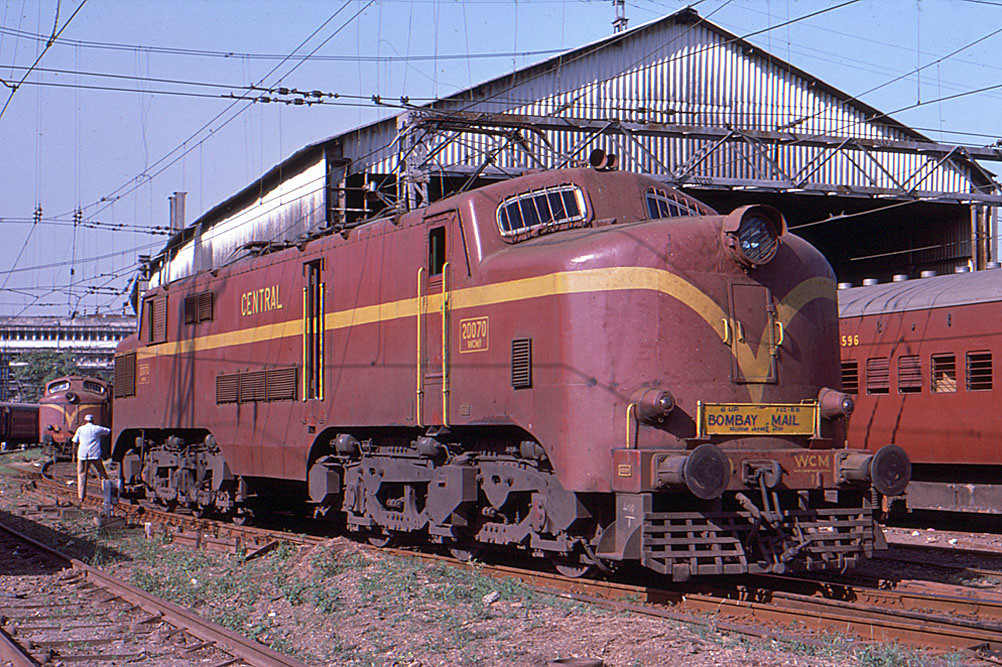
- First Mixed-Class Locos of any type
- Production Period: 1954-1955
- Units Produced: 7
- Wheel Arrangement: Co-Co
- Max Rated Power: 3700 hp
- Top (Rated) Speed: 105 kph
- Traction Motors: 6 DC
The WCM1 class were the first mainline mixed electric locomotives in India of any type/traction. They were imported fully built by English Electric/Vulcan Foundry, UK in 1954 to replace the WCP1s and WCG1s on trains to Pune and Igatpuri. They were unusually massive even for a WCM series loco but were especially well made, the fine workmanship testified by their rounded edges and smooth curves. They had diamond-style Pantographs and a strange feature where their cabin door was located in the middle of the loco side. Many were rebuilt in 1968 and had a proper door cut out of the side. They were used only for passenger duties and never for freight. One is preserved at NRM, rest all have been scrapped.
WCM 2
- All imported from England

- Similar to WCM1 except in Power & size
- Initially meant for Kolkata
- Production Period: 1956-1957
- Units Produced: 12
- Wheel Arrangement: Co-Co
- Max Rated Power: 3120 hp
- Top (Rated) Speed: 105 kph
The WCM2s were just like the WCM1 except that they were somewhat smaller, less bulkier and less powerful with slightly more sloping’ front ends. They also were made by English Electric and Vulcan Foundry and were initially meant for the Kolkata area which was wired at 3000V DC. However soon after their introduction the region was converted to 25 kV AC traction and they were brought to Mumbai and converted to run at 1500V DC. They were also never used for freight duties and hauled passenger trains in and out of Mumbai. All were homed at Kalyan and are scrapped now.
WCM 3
- Contemporaries of the WCM2

- Imported from Japan
- Production Period: 1957-1958
- Units Produced: 3
- Wheel Arrangement: Co-Co
- Max Rated Power: 3600 hp
- Top (Rated) Speed: 105 kph
Along with the English, IR turned to the Japanese as well for DC electric locos for the Calcutta area. Hitachi built and delivered three locos but these also had to be reconfigured for 1500V along with the WCM2 and transferred to Mumbai. Though they were built by a completely different manufacturer, the WCM3 retained those original “butch” looks of the other WCMs but these ones were far smaller than the previous ones. They were apparently had some problems and were relegated to hauling shuttles, shunting and fright duties only. Sadly, nothing remains of these little locos today.
WCM 4
- Improved version of the WCM3
- Last imported DC locos (Japan)
- Production Period: 1960
- Units Produced: 7
- Wheel Arrangement: Co-Co
- Max Rated Power: 4000 hp
- Top (Rated) Speed: 105 kph
Hitachi built and delivered these locos which were supposed to overcome the shortcomings of their WCM3. WCM4s were larger in size with bigger windows, were more powerful with a much higher gear ratio enabling them to deliver more torque to solve the issue of WCM2/3 being unable to handle freights. But that higher tractive effort turned out to be a bit too much and the WCM4 ended up as dedicated freight locomotives while CR has originally intended to use these to haul superfasts and important expresses as well! They were the last DC locomotives and the last “nosed” locomotives of any type to be imported. All WCM4s were scrapped long ago.
WCM 5
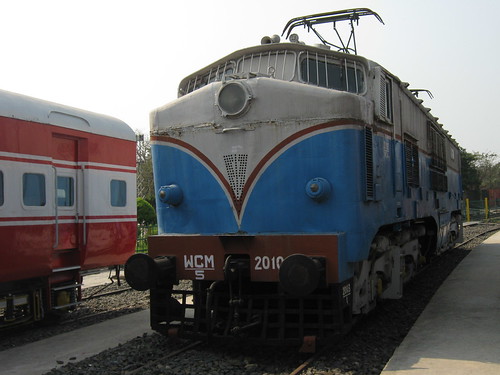 Designed and Developed in India
Designed and Developed in India- First fully “Made in India” locomotive
- Based on all Previous WCMs
- Production Period: 1961-1963
- Units Produced: 21
- Wheel Arrangement: Co-Co
- Max Rated Power: 3700 hp
- Top (Rated) Speed: 105 kph
The WCM5 was a watershed for the Indian Railways, RDSO and CLW. They were the very first locomotive of any kind fully developed and built in India, even though it was based on previous models. All models until then were imported fully built. The WCM5s took the best features of the previous models and tried to erase their shortcomings. They had shorter “noses”, bigger “main” bodies, window arrangements that differed from loco to loco and featured regenerative braking and double-pan pantos. The WCM5 was the mainstay of the Mumbai area in the 1980s and 1990s hauling all important expresses out of the area. Then they started failing en-masse in the mid 1990s causing CR’s “loco crisis” and were all retired soon after. The first WCM5 #20083 named “Lokmanya”, the first ever fully Indian-made loco was once the almost dedicated link for the Deccan Queen. Sadly it was scrapped, but #20103 is preserved at NRM, New Delhi.
WCM 6
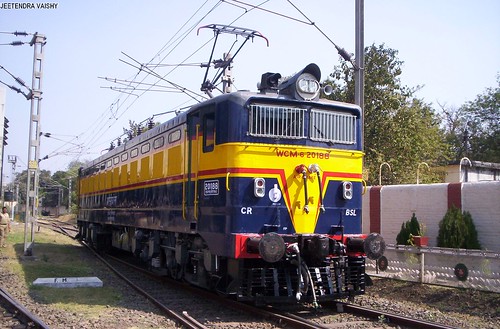 Designed and Developed by RDSO
Designed and Developed by RDSO- Still in Service; Converted to AC
- Looks like the WCGs
- Production Period: 1995
- Units Produced: 2
- Wheel Arrangement: Co-Co
- Max Rated Power: 4600 hp
- Top (Rated) Speed: 65 kph
The WCM6 is an oddball locomotive class with a sad story of never really being allowed to grow to its full potential. They were the first pure-DC locomotives produced after a gap of 32 years after the last WCM was made in 1963. CLW came out with the WCM6 apparently as competition to BHEL’s sterling WCAM3 to be run on Central Railway lines. Though CR (which did not have any WCAMs until then) chose to prefer the bi-current WCAM3, they accepted the two pure-DC WCM6s anyway. Despite being very powerful at 4600 hp with WAG7-type high-adhesion bogies and an insane starting tractive effort of 40 tonnes, they wasted away hauling short freights, shuttles and departmental trains when not doing ‘menial’ duties like shunting and banking, never given an express to haul. And then they were insulted with their speed being cut from 105 kph to 85 kph and now to 65 kph. Now both the WCM6s (#20187 and #20188) have been converted to pure-AC operation at WAG7 specifications and transferred to Bhusaval to live out the rest of their lives. #20188 would become the last pure-DC locomotive to be ever produced in India.
WCAM/G/P (BG Bi-Current Mixed/Goods/Passenger) Locos
The WCAM series of locomotives were developed to work on both AC and DC power to solve the complications of changing locomotives as trains crossed between DC and AC-powered areas on the Western Railway and later on Central Railway. In these locos, one each of the pantographs is used to draw AC and DC power separately and as the loco passes the changeover point one panto is lowered while the other is raised. As Western Railway has completely moved over to AC traction since February 05 2012 and Central is being converted, WCAMs are disappearing rapidly. WCAMs were seen upto Ahmedabad/Baroda in the north, Nasik, Manmad and rarely Itarsi in the east and Pune in the south. UPDATE: All of Mumbai main lines have been converted to 25 kV AC traction. Most WCAM3s are still in service in AC-only mode, though only mostly towards Pune, WAP4 and WAP7s have taken over the Nagpur route.
WCAM 1
 Indigenously developed by CLW
Indigenously developed by CLW- First mainline electric locos on WR
- Production Period: 1975-1979
- Units Produced: 53
- Wheel Arrangement: Co-Co
- Max Power: 2930 (DC) 3850 (AC)
- Top Rated Speed: 100 (DC) 120 (AC)
In 1975, the first WCAM1 #21800 “Vallabh” became the first non-EMU mainline electric locomotive to run on Mumbai’s Western (Railway) lines. Until then all long distance trains out of Mumbai towards Ahmedabad were hauled by steam or diesel. They brought in a revolution of sorts that in one shot ended the age of steam locomotives in Mumbai. CLW researched and developed the WCAM1 along with the WCG2 for CR and the WAM4 for IR, all based on the WAM1 delivered by the 50 Cycles Consortium, which is why all these classes look alike. The WCAM1 uses the same ALCO trimount bogies of the WDM2 and is the only loco class to used fixed ratio transformers to convert AC current to DC to supply to its 750V DC traction motors. They were very hardy and sensibly designed for everyday rugged and easy operation. All were owned by Valsad of WR and singlehandedly serviced the Western line for 20 years until the WCAM2 was introduced. They were rarely seen on CR and after WR was completely converted to AC traction some where converted to work only on AC. All have been withdrawn now and most are scrapped.
WCAM 2/2P
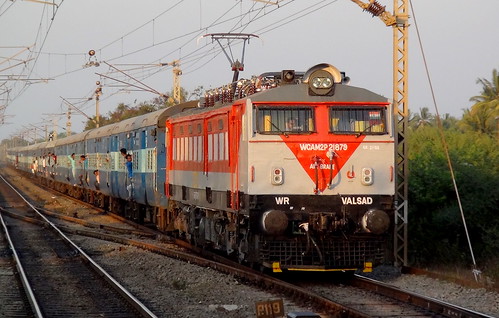 Improved version of the WCAM1
Improved version of the WCAM1- Manufactured by BHEL for WR, now with CR.
- Production Period: 1995-1996
- Units Produced: 20
- Wheel Arrangement: Co-Co
- Max Power: 2930 (DC) 3850 (AC)
- Top Rated Speed: 105 (DC) 120 (AC)
The WCAM2 was a modified and vastly improved (not to mention better looking) version of the WCAM1, developed by BHEL 20 years after it was first introduced. They feature a more powerful 5400 kVA transformer (also found in WAP4s), fabricated bogies, different gearing and circuitry compared to the WCAM1. They were meant to improve on the shortcomings of the old WCAM1s and were part of the “loco boom” of the mid-1990s which saw the introduction of a number of modern loco-classes meant to replace the aging models of the 70s. All 20 WCAM2s are actually owned by BHEL and are only “leased” to IR. They were assigned to Valsad shed of WR and served the region for 17 years before being transferred to Kalyan of CR after WR completely switched over to 25kV AC power. All are still in service today, though used mostly only on AC sections on CR and are used to do all duties including banking. One (#21876) has been converted to work only on AC. WCAM2P is a re-geared version with gear ratios being the lower 58:21 for fast passenger operations rather than the 62:15 of the original WCAM2.
WCAM 3
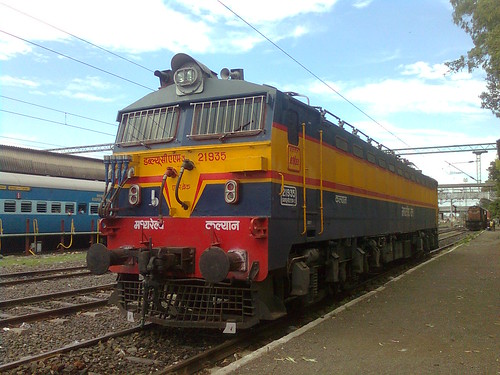 Best version of the WCAM series
Best version of the WCAM series- Manufactured for CR, still in service
- Production Period: 1997-1998
- Units Produced: 53
- Wheel Arrangement: Co-Co
- Max Power: 4600 (DC) 5000 (AC)
- Top Rated Speed: 105 (DC & AC)
The WCAM3 aka the “Hunk of Mumbai” is the crowning glory of the WCAM series. During th early 1990s, Central Railway needed a super-powerful, efficient, rugged and easy-to-operate loco that could also effectively tackle its ghat sections and would replace its ageing WCM fleet. CR saw how WR’s WCAM1s and WCAM2s were running successfully all over Mumbai and Gujarat for the last 30 years and promptly turned to BHEL with their specifications. The result was the 5000 hp WCAM3 with Hitachi traction motors, high-adhesion fabricated bogies, monocoque chassis and rheostatic braking in DC mode. They single-handedly manage CR to this day along with help from the WCAG1s and more recently the WCAM2s. Though they are no longer being produced, all 53 are still in service even after CR’s complete switch over to AC power, and some have been converted to work only on AC traction. The WCAM3s are among the most handsome locomotives even seen on Indian Railways.
WCAG 1
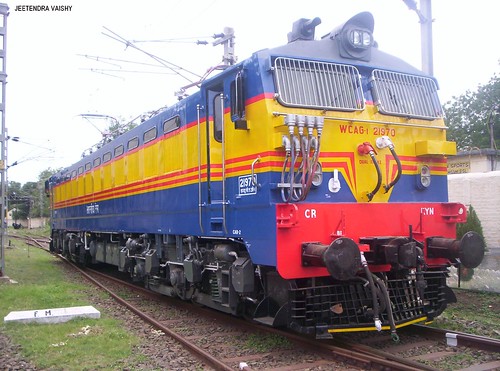 Dedicated freight version of the WCAM3
Dedicated freight version of the WCAM3- Manufactured for CR, still in service
- Production Period: 1999-2000
- Units Produced: 11
- Wheel Arrangement: Co-Co
- Max Power: 4600 (DC) 5000 (AC)
- Top Rated Speed: 100 (DC & AC)
The WCAG1 is the last class of locomotives to work on any kind of external Direct Current (DC) traction. They are in essence the same WCAM3 only differing in gearing ratio (65:16) and some other details aimed at delivering more torque for freight operations at the expense of speed. They replaced the aging WCG2 fleet, relegating them to shunting and banking duties and also eliminated random freight-hauling diesels around Mumbai division. They have all the features of the WCAM3 including dimensions, looks, bogies, traction motors and electricals but weigh 128 tonnes as opposed 113t of the WCAM3. All are homed at Kalyan and are still in service.
No DC or AC/DC locos are being manufactured today in India nor will they ever be. In a few years every single one of these locomotives will be consigned to the cutter’s torch and become memory and a part of history as Mumbai will be taken over by WAPs and WAGs. But in this universe everything that has once been created has to be destroyed. After the diesels of the WDM series and the WDP and WDG series, this concludes the description of the WCM and WCAM purely DC Broad Gauge locomotive series. Next up are 25,000V AC traction mixed locomotives, the WAM series!
Photo Courtesies: Cover Picture (WCM1): Bingley Hall, WCP1: Jimmy Jose, WCP2: Prathmesh Kini, WCG1: Simon Chorley, WCG2: Raj WCAM3 21900, WCM1: Bingley Hall, WCM2: Bingley Hall, WCM3: S.Shankar (IRFCA), WCM5: Avishek Basu, WCM6: Jeetendra Vaishy, WCAM1: Railfan Sparsh, WCAM2P: Arzan Kotval, WCAM3: Shrikant Thopate, WCAG1: Jeetendra Vaishy.
More Chapters on Indian Locomotives
Locomotives of the Indian Railways | Locomotives Terminologies and Design
How Locomotives are Classified | How Electric and Diesel Locomotives Work
DIESELS: The WDM Series (ALCOs) | The WDP and WDG Series (ALCOs and EMDs)
ELECTRICS: DC and AC/DC Locos | The WAM Series (AC mixed) | The WAG Series (AC Freight)


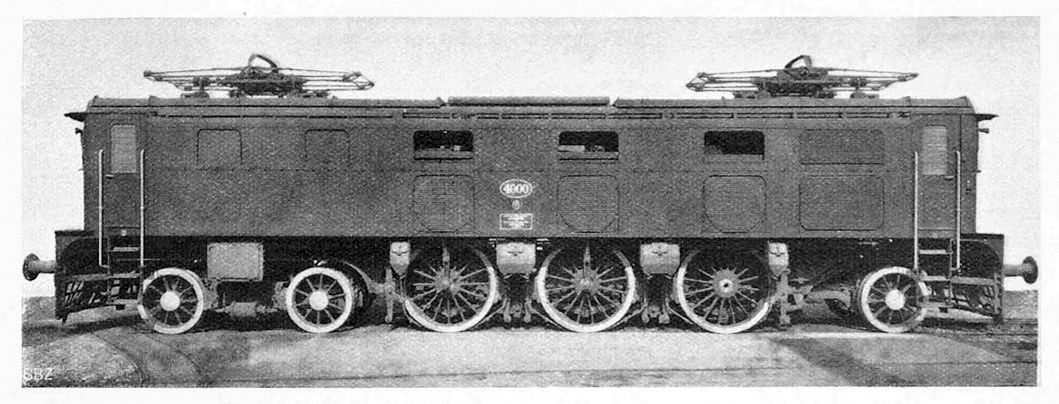
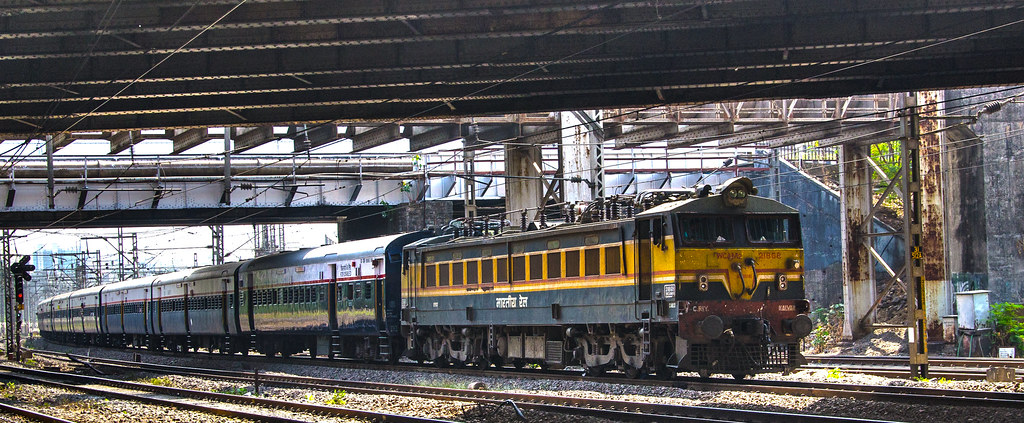
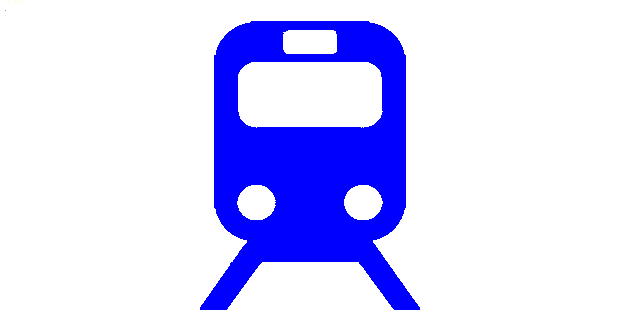

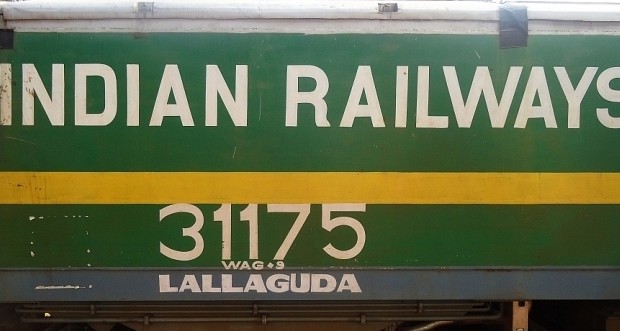
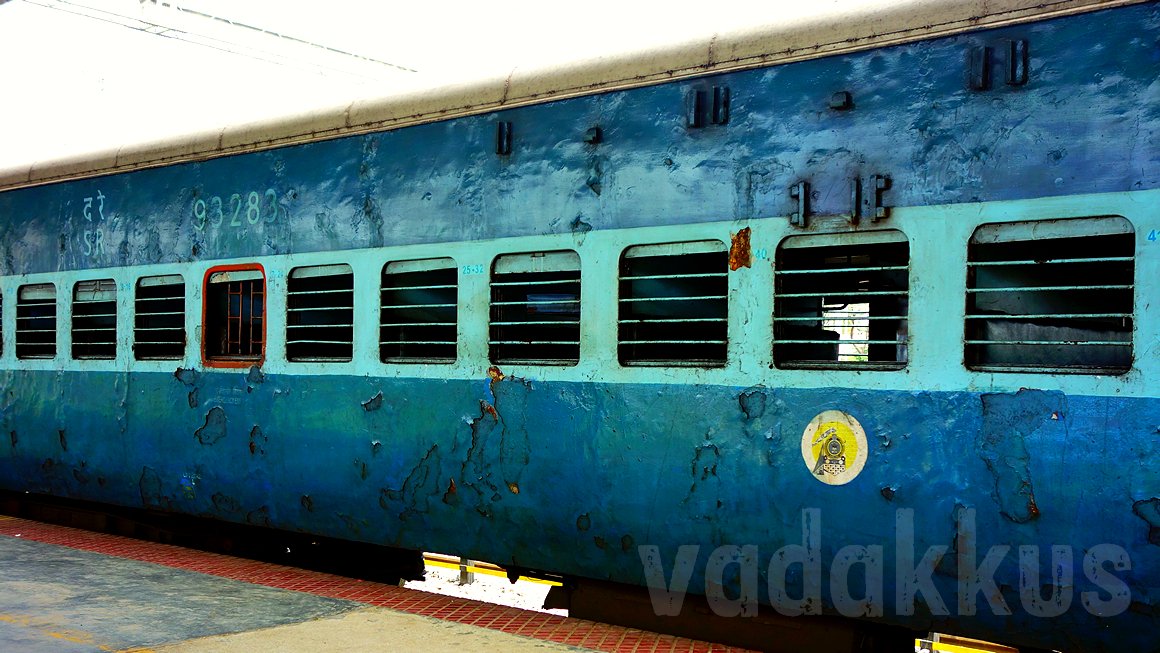
Happy new year ! Only the first 10 locomotives of the WCG1 class were imported from Switzerland, the remaining 31 have mechanical parts from Vulcan Foundry, UK. Pls look in the German Wikipedia. I made a nice article for these locomotives.